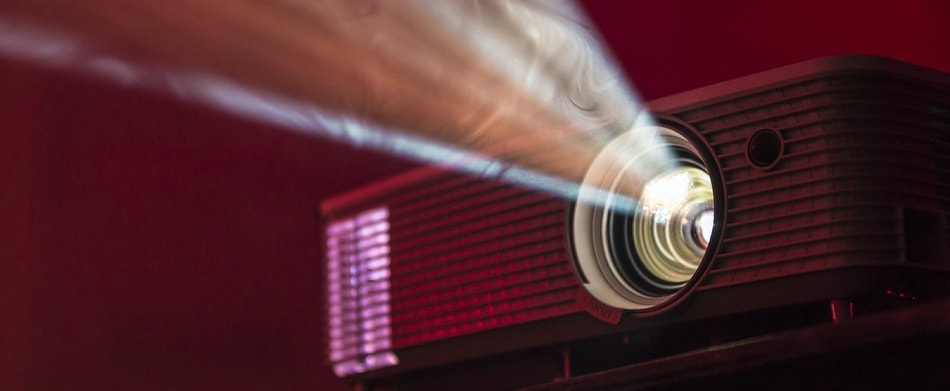When thinking about buying a projector, one question to ask is whether a wireless-capable model might be right for you.
- Cables can be a messy and even a trip hazard;
- You have to be close to the projector;
- It’s easy to forget or lose a cable (or have the wrong kind);
- Cables can get damaged, especially around the connectors, and then you get picture or sound problems (or maybe no signal at all);
- Your playback device might simply not have a connection method that works with that projector;
- Presenters can’t walk around and interact with the audience as well while controlling the presentation from a tablet or smartphone.
All of these problems can occur in the home, and you get a particular set of extra problems if you are projecting outdoors, with cable lengths and the risk of contact with water.
So, with all these aggravations, it shouldn’t be a surprise that wireless projectors are growing in popularity.

As picture quality has gone up in recent years from HD to 4K, that means a lot more data for a wireless projector to handle, so it’s always important to check you have the right capacity to get your pictures safely across. Sometimes there is some additional compression or encryption used to get the pictures and sound safely across and at the right quality.
Wireless Projection Technologies
There are different kinds of wireless projection technology; here are the main ones:
Bluetooth (the higher the Bluetooth version, the better)
Integrated WiFi connecting functions which are compatible with IOS and Android system
Wireless display chips or USB dongles. Each vendor typically has its own approved USB adaptor type that only works with its projector range. So, you must get the right USB adaptor’s brand and download an application to run things correctly.
Google Chromecast for smartphones. Some projectors now allow you to install Chromecast into your projector’s HDMI port. Then you download the Chromecast application on your smartphone (both Apple and Android work). Useful if you want to show something from Netflix or more likely Youtube.
Miracast, an Intel-based wireless technology
Ad hoc direct peer to peer connections. These are very effective because they create a direct link between the playback device and the projector no other device can access the content.
Wi-Fi network connections. The projector and the playback device both connect to the same network over Wi-Fi. They might do that via a wireless access point or via a router.
In reality one of the most common and robust setups is a Wi-Fi card that you fit into the projector, which allows it to create or connect to a wireless network and in doing that, sync up with a computer, tablet computer or phone. To do that you need to install utility applications that are usually free and provided by the projector’s vendor.
In summary, there are many methods now for ditching those annoying cables. Setting that wireless up is admittedly sometimes a bit of a hassle but once done then you are good to go.






